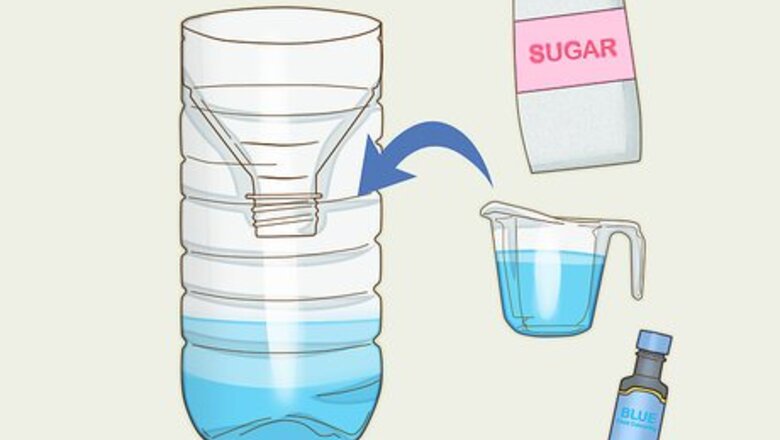
views
Using Fly Traps
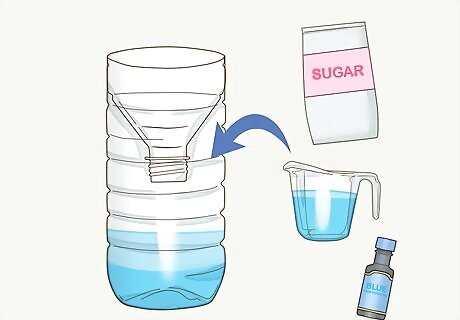
Make a trap from a plastic bottle. One of the most effective homemade fly traps is made using a simple plastic water bottle. Unscrew and remove the cap, then use scissors to pierce the plastic and cut off the top quarter of the bottle. Fill the bottom part of the bottle with a quarter cup (60 mL) of sugar, a quarter cup (60 mL) of water, and a couple of drops of blue food colouring. The blue colour helps to attract flies, but most colours or no colours will attract flies as long as it isn't yellow. Yellow is found to be the only repellent colour for flies. Alternatively, a little water mixed with dish soap and a few drops of apple cider vinegar will also attract flies. Take the top quarter of the bottle, turn it upside down and rest it on top of the other part of the bottle to form a funnel. The flies will be able to crawl into the bottle, but will find it much harder to find their way out. Place the fly trap in a sunny spot that is frequented by flies and wait for them to collect inside the bottle.
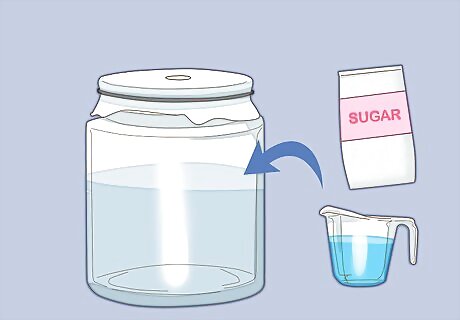
Make a trap using a glass jar and plastic wrap. If you don't have any plastic bottles lying around, you can make another homemade fly trap using a simple glass jar (or even a drinking glass) and some plastic wrap. Take your glass jar and fill it almost to the top with sugar water or a solution of sugar dissolved in apple cider vinegar with a squirt of dish soap. Take a square of plastic wrap and use it to cover the opening of the glass jar. Use a rubber band to secure it if it feels loose. Use a pen or scissors to poke a small hole into the center of the plastic wrap. This will allow the fly to enter the jar, but once it gets inside, it will drown in the liquid. Place your trap in a sunny spot, outside, or a place where you have seen many flies.
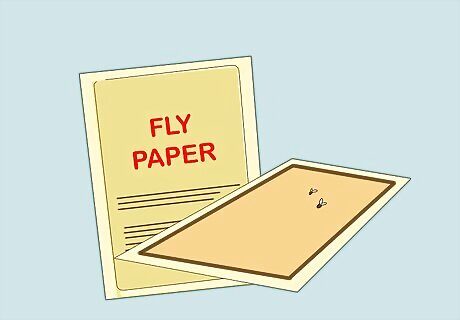
Use flypaper. Flypaper is a type of sticky paper which you can hang around your home to catch flies with minimal effort. The paper is coated in a sweet, sticky (and sometimes toxic) substance which attracts flies and causes them to stick. Flypaper may look unsightly in the home, but it is a very effective method of catching flies. EXPERT TIP Kevin Carrillo Kevin Carrillo MMPC, Pest Control Specialist Kevin Carrillo is a Pest Control Specialist and the Senior Project Manager for MMPC, a pest control service and certified Minority-owned Business Enterprise (MBE) based in the New York City area. MMPC is certified by the industry’s leading codes and practices, including the National Pest Management Association (NPMA), QualityPro, GreenPro, and The New York Pest Management Association (NYPMA). MMPC's work has been featured in CNN, NPR, and ABC News. Kevin Carrillo Kevin Carrillo MMPC, Pest Control Specialist Our Expert Agrees: Pin flypaper to the ceiling in your kitchen or bathroom — wherever the flies are already attracted to a food source. If you have more than a couple of flies, you need to start looking for their food source and fixing that problem.
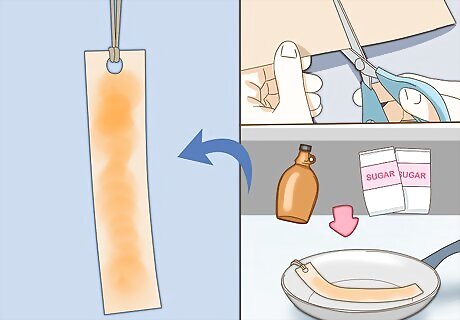
Make your own flypaper. Although you can buy flypaper at most home supple stores, you can make your own non-toxic version using a brown bag, maple syrup and sugar: Cut the brown paper bag into one-inch wide strips. Use a pen to poke a hole at the top of each strip and thread a little string or twine through to form a loop. In a wide pan or bowl, mix half a cup (120 mL) of maple syrup, 2 tablespoons (30 mL) white sugar, and 2 tablespoons (30 mL) of brown sugar. Place the strips of paper into the mixture (dangling the string over the edge) and leave them to soak for several hours or overnight. Remove the strips from the mixture and hold them above a sink until they stop dripping. Then hang them indoors or outdoors, or wherever you have a problem with flies.
Using Your Hands
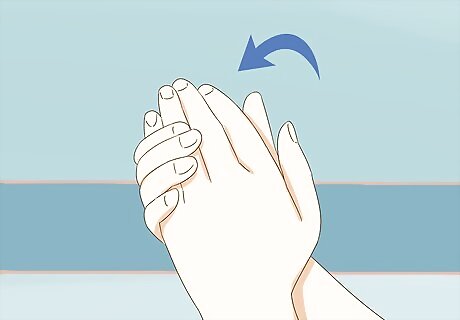
Cup your hand. The first step in catching a fly is to take your dominant hand and bend it into a cup shape. Practice quickly shutting your fingertips against the heel of your hand. Make sure to leave a hollow space inside, as this is where you will trap the fly. Be careful. If you shut your hand too tightly, or make a fist, you will simply crush the fly. If you don't mind that the fly dies, then this won't be a problem.
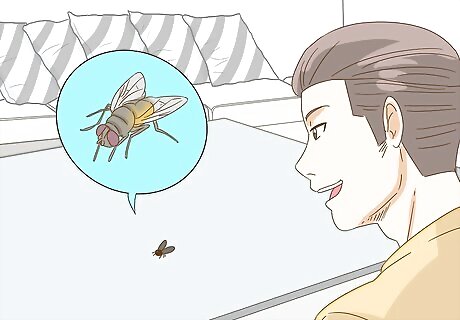
Wait for the fly to land. When catching a fly with your bare hands, it's best to wait until the fly lands on a flat surface, such as a table or counter top. Move slowly towards the fly. Any sudden movements can set the fly off and you will have to wait for it to land again. Waiting until the fly lands on a stable surface makes it easier to predict the fly's movements. Make sure the surface is clutter-free, as you don't want to knock anything over in your fly-catching attempts.
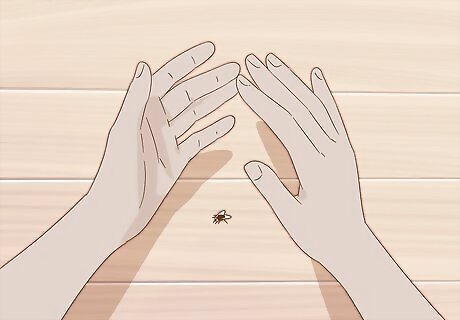
Wave your cupped hand over the fly. Once the fly lands, take your cupped hand and wave it a couple of inches above the fly, closing it, just like you practiced, as you wave your hand. As the fly senses your hand movement, it will get spooked and fly straight upwards and directly into your cupped hand. As soon as it enters your hand, close your hand quickly to trap the fly inside. Now you are free to release the fly outdoors, place it into a jar for your inspection, or feed it to a pet.
Using a Cup
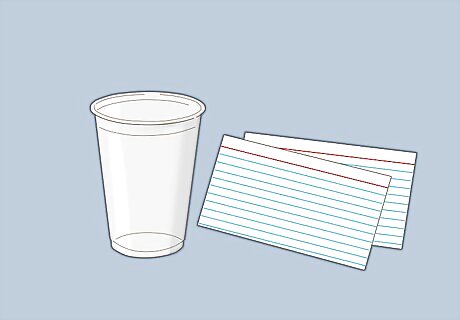
Gather your materials. To catch a fly using this method you will need a cup, preferably a clear plastic one which you can see inside of and which will not break, and a sheet of paper or large index card. The cup will trap the fly while the card helps to keep the cup closed and the fly from escaping.
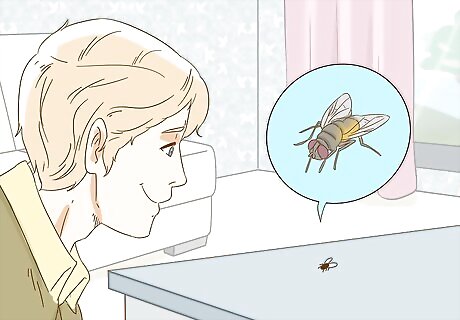
Wait for the fly to land. It will be much easier to catch the fly once it has landed on a stable surface, such as a table top, kitchen counter or window pane. Move slowly towards the fly. Any sudden movements can set the fly off and you will have to wait for it to land again.
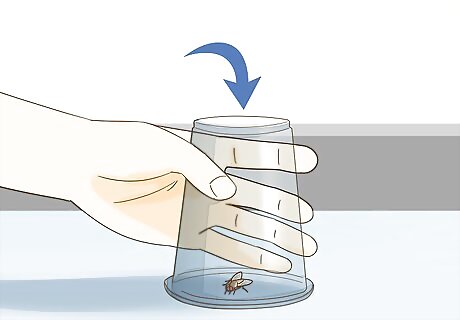
Place the cup over the fly. Once the fly lands, quickly and stealthily place the cup over it, trapping it inside. If you miss, follow it around until it lands again.
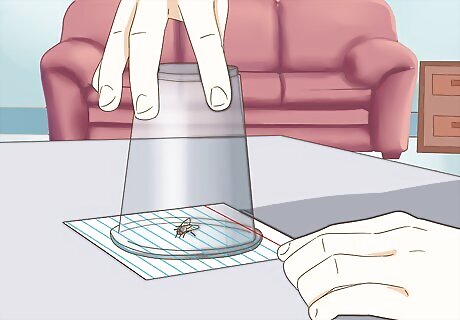
Slide the paper beneath the cup. Once the fly is in the cup, you are faced with the dilemma of how to lift the cup from the flat surface without letting the fly escape. Your sheet of paper or large index card can solve this problem. Be sure to keep the cup close to the table when you're sliding your paper beneath the cup. If you leave too big a gap, the fly could escape.

















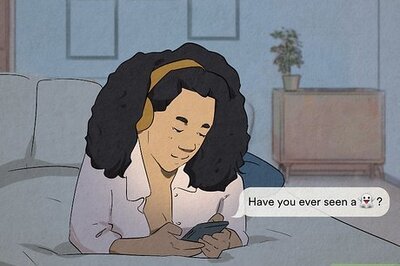
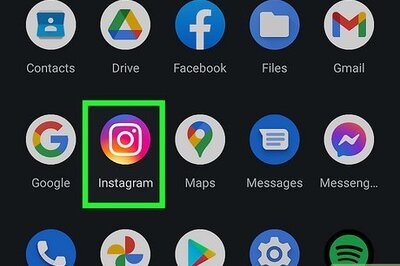

Comments
0 comment